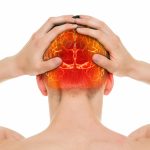In 2010, due to the efforts of Senator Kent Conrad, the US Senate officially designated June 27 as National PTSD Awareness Day, to help promote understanding of Post-Traumatic Stress Disorder. The date was chosen to honor the birthday of Staff Sergeant Joe Biel. SSgt Biel was a North Dakota National Guard member who served two tours in Iraq and died of suicide in 2007. In 2014, the Senate made June PTSD Awareness Month.
Many TorkLaw clients who have experienced catastrophic injury or lost loved ones due to motor vehicle accidents, defective products, or dangerous locations suffer from post-traumatic stress disorder, or PTSD. TorkLaw is committed to helping all PTSD victims regain control of their lives.
What is PTSD?
Post-traumatic Stress Disorder, or PTSD, is a psychological illness that affects individuals who have experienced a horrifying event such as sexual assault, mass violence, or even catastrophic motor vehicle accidents. The persistent and severe emotional aftereffects of such devastating occurrences create a mental health condition that can significantly impair every aspect of daily life. PTSD often results in related symptoms like depression, anxiety, substance abuse, and memory or cognition problems.
Around 70 percent of American adults have experienced a traumatic event, and about 20 percent of those develop PTSD. What that means is that 1 of 13 people in this country will develop PTSD during their lifetime. At any given time, around 13 million Americans are suffering from PTSD.
Who Suffers from PTSD?
Most people associate PTSD with military veterans – and PTSD absolutely impacts people who have experienced military combat. The Anxiety and Depression Association of America says that 67 percent of people exposed to mass violence will develop PTSD.

Additionally, research has shown that combat explosions may cause brain tissue damage; there is a clear link to PTSD in those who have experienced such blast waves.
However, while PTSD remains a clear concern for military and combat veterans, they are not largest group of PTSD sufferers.
The type of trauma most likely to cause PTSD is sexual assault.
As the #MeToo movement has shown us, the number of sexual assault victims is far larger than most people imagined. According to RAINN (Rape, Abuse & Incest National Network), someone in the U.S. experiences a sexual assault every 92 seconds. 90 percent of those victims are female. 94 percent of women who were raped experienced PTSD symptoms during the two weeks immediately following the rape, and nearly half still had symptoms after three months. 30 percent still reported symptoms nine months later. Because of this, women are twice as likely as men to develop PTSD.
[bctt tweet=”Sexual assault is more likely than any other traumatic event to result in PTSD.” username=”torklaw”]
Other PTSD Causes
Anyone can develop PTSD as the result of exposure to extreme trauma, including:
- Rape or sexual violence
- Other types of physical assault
- Serious accident or injury
- Witness to a violent death or injury
- Natural or industrial disaster
- Sudden death of a loved one
- Life-threatening illness or injury of a child

Recognizing the Risk for PTSD
Those at considerable risk for PTST include anyone who has experienced or witnessed a violent act, or is repeatedly exposed to life-threatening situations. This includes:
- Survivors of domestic violence, forced sexual acts or physical assault
- Those exposed to random acts of violence, such as a school shooting
- Children who are sexually, physically, or verbally abused or neglected
- Military members or civilians who have experienced combat/war
- urvivors of events like motor vehicle accidents, structure fires, natural disasters, or catastrophic events like plane crashes
- First responders to crimes or trauma situations
- People dealing with life-threatening illness or the loss of a loved one
Research suggests that prolonged trauma can change brain chemistry, and this can also lead to PTSD.
PTSD Symptoms
While all survivors react differently, PTSD has three main symptoms, or more accurately, symptom clusters:
Re-experiencing the Event
During a crisis, the part of the brain called the amygdala becomes overactivated and creates an emotional response called fight-or-flight. At the same time, the hippocampus, the brain’s memory storage system, is suppressed, so the person can focus on survival.
Because the memories are not properly coded, victims may only recall sensations they experienced during the crisis. Sights, sounds, smells, or feelings that remind them of the event may trigger nightmares or flashbacks: intrusive, involuntary thoughts of reliving the event.
When memories of the traumatic events occur, the brain doesn’t distinguish between memory and real-time circumstances. Victims may have extreme physical or emotional reactions, such as chills, heart palpitations, or panic.
Avoidance
Because flashbacks and nightmares cause PTSD victims to relive their trauma repeatedly, they may intentionally or subconsciously change their behavior to avoid places, sights, sounds, smells, or feelings that trigger memories. They may lose interest in activities they once enjoyed, and withdraw from friends and loved ones. They may emotionally disassociate from people and experiences, and become detached and estranged.
Hyperarousal
Another cluster of symptoms for PTSD involves persistent hypervigilance for danger: being on always guard, on edge, or easily startled. This activity occurs in the same part of the brain that’s active during trauma: the amygdala. This state of hyperarousal creates difficulty sleeping or concentrating, irritability, angry outbursts, mood fluctuations, or panic attacks. It may be accompanied by physical symptoms like tense muscles, or hyperventilation.
The Vicious Cycle
These symptoms often feed into each other. Hyperarousal triggers the fight-or-flight mode. At some point, the brain becomes overwhelmed and shifts into avoidance. Avoidance clears the way for re-experiencing the event, which in turn can trigger hyperarousal. PTSD is often a vicious cycle of emotionally painful responses.
Other Cognitive Issues
Other problems or side effects that may mask or intensify PTSD symptoms include:
- Trouble remembering key facts about the traumatic event.
- Negative thoughts about oneself or the world, or distorted feelings of guilt or blame.
- Depression or other anxiety disorders, including panic disorder.
- Chronic pain, fatigue, respiratory problems, headaches, back pain, muscle cramps, or cardiovascular problems.
- Relationship problems with life partners, friends, co-workers, family, and others.
- Self-destructive behavior like alcohol or drug abuse, self-harm, or suicidal behavior.

When to Seek Help
It is completely natural to have some of these symptoms after a dangerous event. Some people may have acute stress disorder, or ASD: serious symptoms in the weeks immediately following the event, but they go away.
And there is nothing wrong with you if you don’t have a stress response. Not everyone who experiences extreme trauma develops ASD or PTSD. For those who do, symptoms usually appear within several weeks of the trauma, but some people don’t have symptoms for months or even years.
How do you know when it’s time to seek help?
It’s time to seek the diagnosis of a medical professional if:
- You have experienced symptoms for a month or longer, and
- Those symptoms cause distress or create disruptive problems at work, home, or social situations.
[bctt tweet=”Be mindful of combat veterans when you celebrate the 4th of July – fireworks can trigger painful PTSD episodes.” username=”torklaw”]
PTSD Treatment
If you are diagnosed with PTSD, there are many effective approaches to treatment. All treatment options should be discussed and managed with the help of a healthcare professional who is clinically qualified to diagnose PTSD and help develop an appropriate treatment regimen.
Treatment options for people with PTSD are medications, psychotherapy (“talk” therapy), or a combination of the two. Some PTSD sufferers may need to try different treatments to find what works for their unique symptoms.
Psychotherapy
Psychotherapy is sometimes called “talk therapy,” because it involves talking with a mental health professional, either one-on-one or in a group. Effective therapies may include:
- Teaching the patient and family members about the effects of trauma
- Learning to identify triggers
- Using relaxation/meditation and anger-control skills to manage symptoms.
- Improving sleep, diet, and exercise habits.
One approach is called cognitive behavioral therapy, or CBT. This may include exposure therapy to help patients face and control their fear, and deal with their feelings about it. Cognitive restructuring helps people make sense of distorted traumatic memories that cause negative emotions, and reframe their experience in a more realistic way.
Other types of psychotherapy, such as Eye Movement Desensitization and Reprocessing (EMDR), are also highly effective in treating PTSD.

Medications
Antidepressants and other medications may be prescribed along with psychotherapy. Medications that may be helpful for specific PTSD symptoms include antidepressants, selective serotonin reuptake inhibitors (SSRIs), mood stabilizers, anticonvulsants, and in some cases, antipsychotics to help with pervasive flashbacks and/or nightmares.
Doctors and patients should work together to find the best treatment: it may require trying more than one type of medication or therapy, a combination of medications and therapies, different dosages. What’s important is to be patient and not give up.
If you are suffering from PTSD as a direct result of someone’s wrongdoing or negligence, you may be able to collect compensation to help you recover. TorkLaw’s personal injury attorneys may be able to help. Give us a call – we’re available 24 hours a day, 7 days a week, and your consultation is free. We can help you recover.





